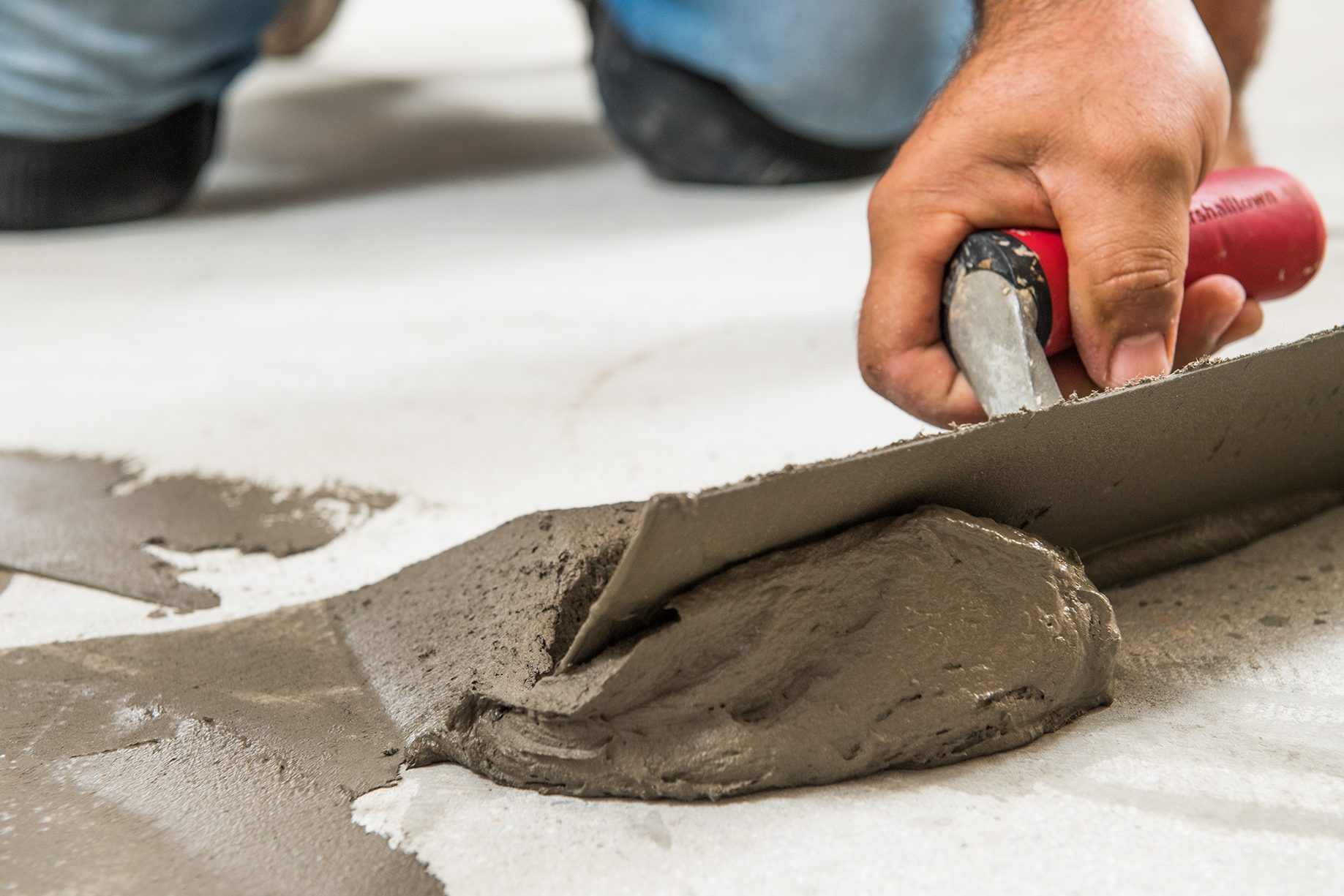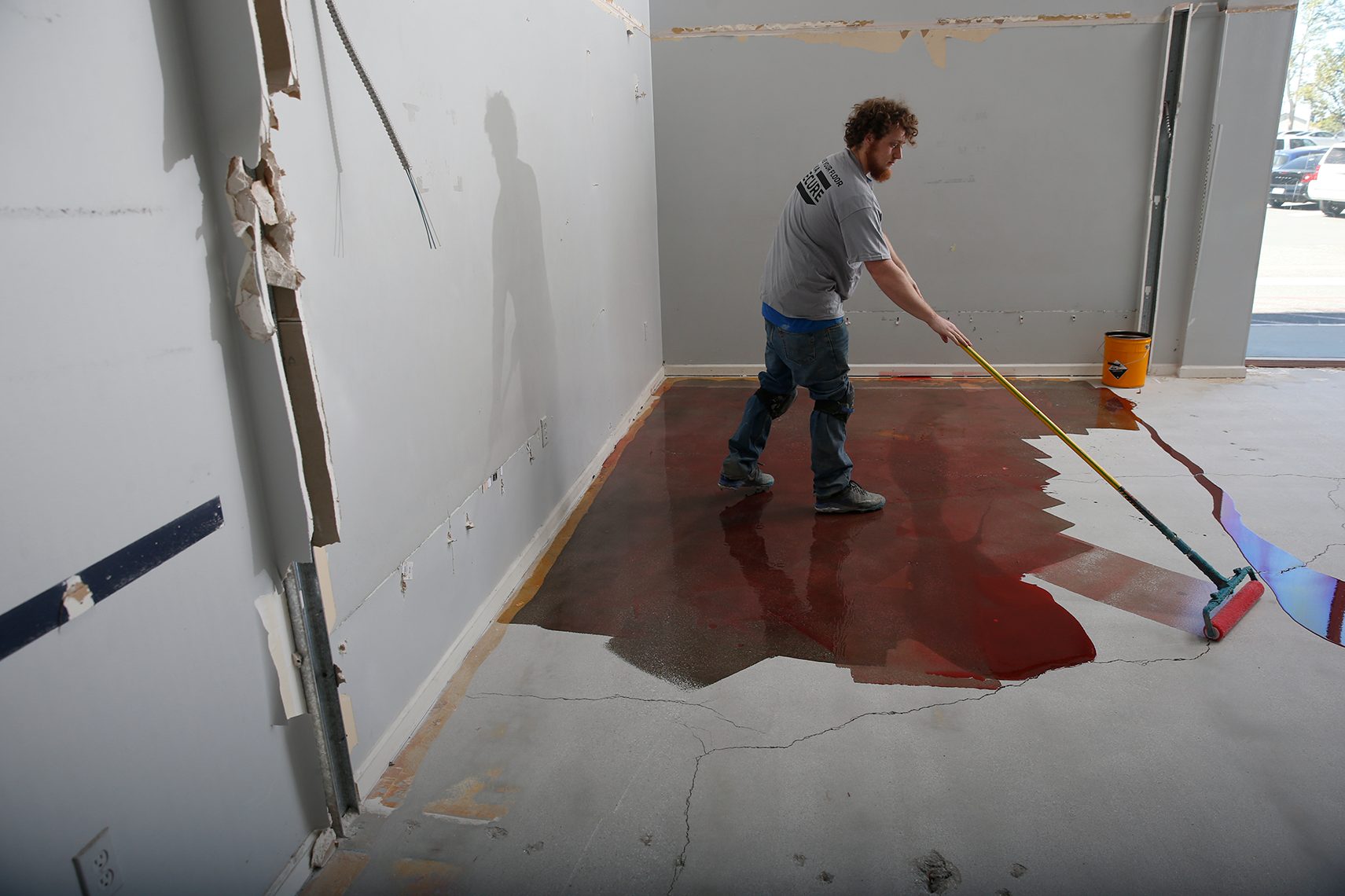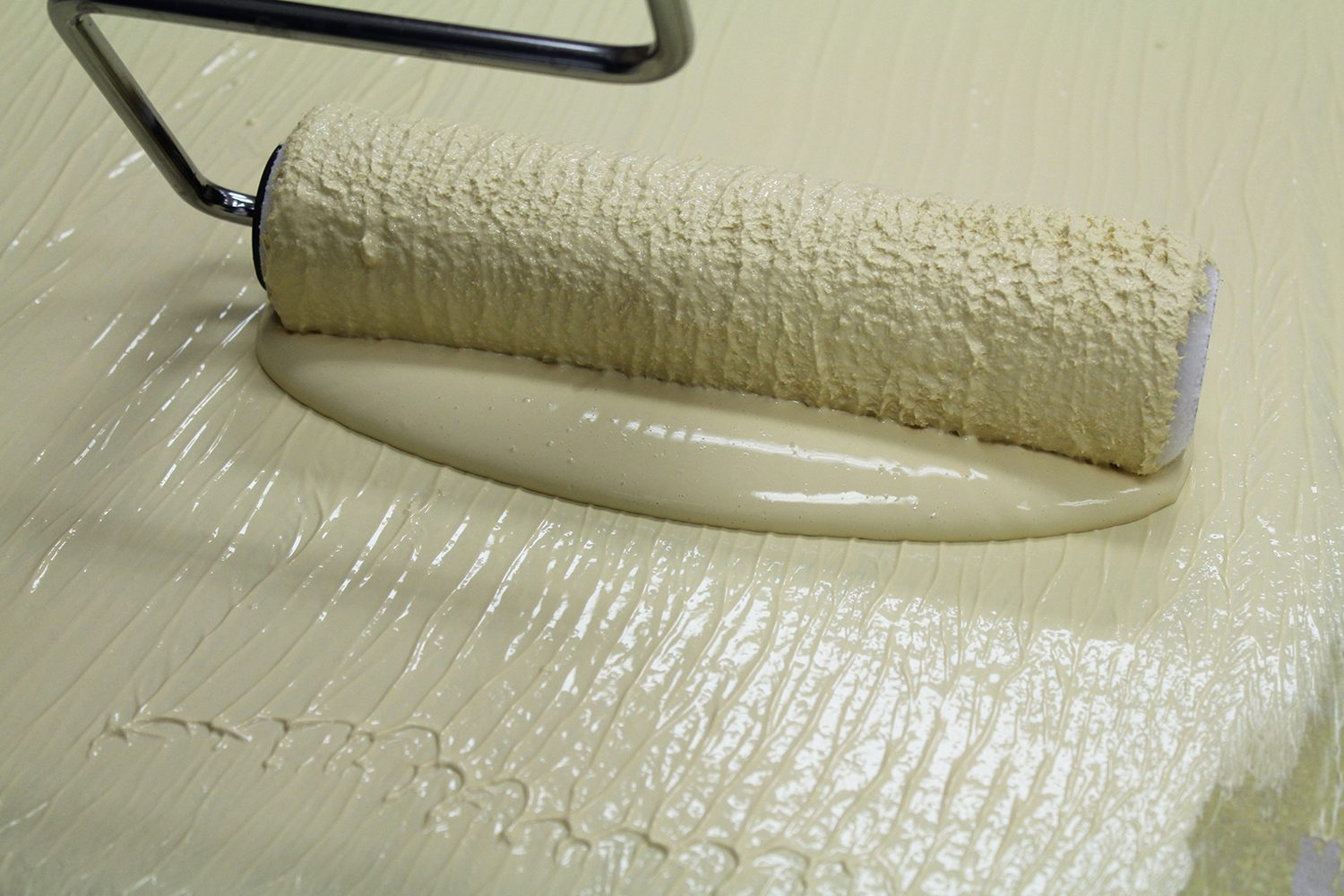Products for Predicaments:
Surface Prep on Tight Deadlines
Immediate or eventual project failure can occur when surface preparation is neglected, so learn the proper steps to take and products that can assist in a successful tile installation
by John McIntyre, Sika field technical representative
Photos courtesy of Merkrete
Substrate leveling.

The demand for tile and flooring installations is at an all-time high. But, when this demand runs concurrent with labor shortages and other modern realities, timetables for projects become more compressed. When you are about to start a job and are faced with a seemingly unrealistic deadline before moving on to the next, there is a temptation to cut corners. The biggest corner cuts tend to involve surface preparation.
While pointing out that you never want to cut any corners during flooring installations, surface preparation is one area you want to be sure receives all the effort it requires. Immediate or eventual project failure will almost invariably result when surface preparation is neglected. Fortunately, new product technologies are constantly being developed to adequately prepare a surface for flooring installations in less time.
Speedy Substrate Levelling
Floor flatness is compulsory for a successful installation. For standard ceramic tile installations, floors must not have a flatness deviation exceeding 1/4 inch in 10 feet. Large-format tiles demand a more exacting maximum of 1/8 inch in 10 feet. The best way to determine a substrate’s suitability is using a long straightedge to find gaps that fall outside the threshold. Since tile is ridged and slightly bowed, gaps that exceed the allowance will exacerbate tile lippage. These deviations must be neutralized through products and/or grinding depending on the scale and severity of the abnormalities. Traditional patches and levelers work well to bring low areas of substrates up to plane with high areas, but their drying times can be detrimental to challenging deadlines.
Fortunately, there are reliable materials in the market that achieve the same results in a fraction of the time. For substrates needing moderate repair, products like SikaLevel®-025 Patch are fast-drying, self-curing compounds for smoothing, leveling, patching and filling cracks, holes and voids in concrete. These flowable hybrid patches can be tiled over in as little as 30 minutes. More substantial substrate defects will need products like SikaLevel®-325. These can flatten an entire floor quickly and be ready for non-moisture-sensitive flooring in four hours. Both product types quickly get your substrates within the required flatness allowance so you can proceed with your next high-speed prep step.

Moisture control
Moisture Barriers
Concrete moisture is an unavoidable byproduct of the slab’s drying process. Mix water creates tiny capillary networks as it escapes the slab during drying. These capillaries become frozen in the slab, leaving perpetual conduits for subsurface moisture and vapor to continually traverse the slab. This moisture can degrade moisture-sensitive surfaces such as resilient flooring, wood flooring and floating floors. Even membranes and tile mortar bonds can be compromised if concrete moisture exceeds allowable limits. A liquid-applied moisture barrier offers negative waterproofing that prevents moisture vapor from getting through the slab and harming the installed surface. Drying times for standard moisture solutions can consume the better part of a day -- pushing the project completion time out more than installers would like.
Now there are fast-drying, easy-to-apply moisture barriers that greatly speed up this important surface preparation step. Products like Sika® MB Redline are fast-curing epoxy systems that control moisture propagation on cementitious substrates. These vapor barriers have a perm rating of 0.06 and cure in just three to three and a half hours. Ready in a fraction of the time of traditional moisture barriers, these high-speed materials perform well on short timetables.

Crack isolation
Crack Isolation
One preparation step that acts like insurance to safeguard the longevity of finished surfaces is crack isolation. Even perfectly poured concrete slabs can develop cracks over the time since they never stop expanding and contracting. These cracks will likely carry over to the finished surface, ruining an otherwise sound installation. Crack isolation membranes are applied to substrates to prevent this transfer. The membranes are primarily available in sheet or liquid-applied form. Trimming sheet membranes to the needed sizes and shapes can seem interminable, while long drying times follow standard liquid-applied membrane applications.

Waterproofing
The good news is there are fast-drying liquid-applied membranes that accelerate your surface preparation. Products like SikaTile®-200 Fracture Guard Rapid are applied with a brush, roller, trowel or airless sprayer to accommodate any shape. These membranes can be ready for tile in one hour, providing anti-fracture protection regardless of the project timeframe.
Waterproofing
Waterproofing is vital for tile or stone installations in areas with any measure of water exposure. Water and moisture will easily penetrate grout, inflicting water damage behind the tile and wreaking havoc on adjoining structures. Like crack isolation materials, sheet and liquid-applied membranes dominate the market. And like crack isolation materials, sheet membranes still need to be trimmed to size and liquid-applied membranes are still burdened with cure time.
Products like SikaTile®-100 Moisture Guard are easily applied and dry very quickly. These liquid-applied membranes have a large performance advantage over sheet membranes. Sheet membranes have seams that can leak if not installed properly. Liquid-applied membranes form a continuous barrier that guides water off the installation and toward the drainage. These membranes can dry in two hours and may be flood tested in four hours. Even the most formidable shower, bath or steam room jobs can be ready for tile in a relatively short amount of time.
Step Up Your Surface Prep
It is a good idea to familiarize yourself with the fast-setting, quick-cure solutions on the market to see what kind of time savings you can expect. Thorough product knowledge will aid you in scheduling your flooring jobs and give you untold flexibility from project to project. It is also smart to partner with a manufacturer that provides comprehensive system warranties throughout the life of the installation. A high-quality, high-speed system can be your best friend when faced with challenging deadlines.
John McIntyre is a field technical representative for Sika. His construction professional experience began in his teens and has taken him through all avenues of the tiling industry. Following nearly a decade in tile materials distribution and manufacturing, McIntyre served in technical sales for tile setting materials manufacturer, Merkrete, until 2020. Aside from his duties at Sika, McIntyre devotes his time evaluating CTIs for CTEF.
About the Author


